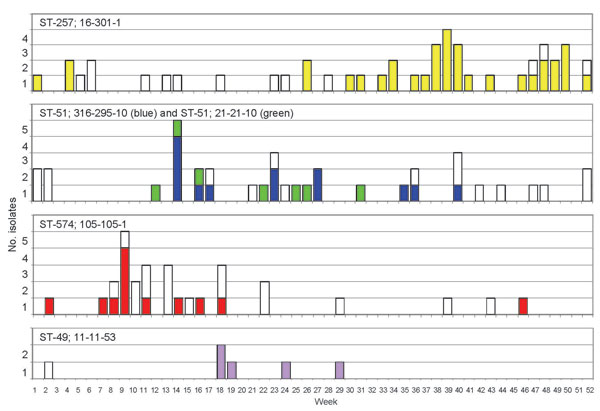Volume 14, Number 10—October 2008
Dispatch
Extended Sequence Typing of Campylobacter spp., United Kingdom
Figure 2

Figure 2. Clusters of related 10-locus types of Campylobacter spp. detected in Oxfordshire, United Kingdom, during a 1-year study. Five groups of isolates with identical genotypes show statistically significant clustering in time (p values are shown in the Table). Each group is indicated by 1 color. White bars indicate other isolates that share the same sequence type (ST) but that are differentiated by their different antigen type. Numbers of isolates of each genotype are shown on a weekly basis; week 1 corresponds to the start of the study on September 15, 2003.
Page created: July 13, 2010
Page updated: July 13, 2010
Page reviewed: July 13, 2010
The conclusions, findings, and opinions expressed by authors contributing to this journal do not necessarily reflect the official position of the U.S. Department of Health and Human Services, the Public Health Service, the Centers for Disease Control and Prevention, or the authors' affiliated institutions. Use of trade names is for identification only and does not imply endorsement by any of the groups named above.